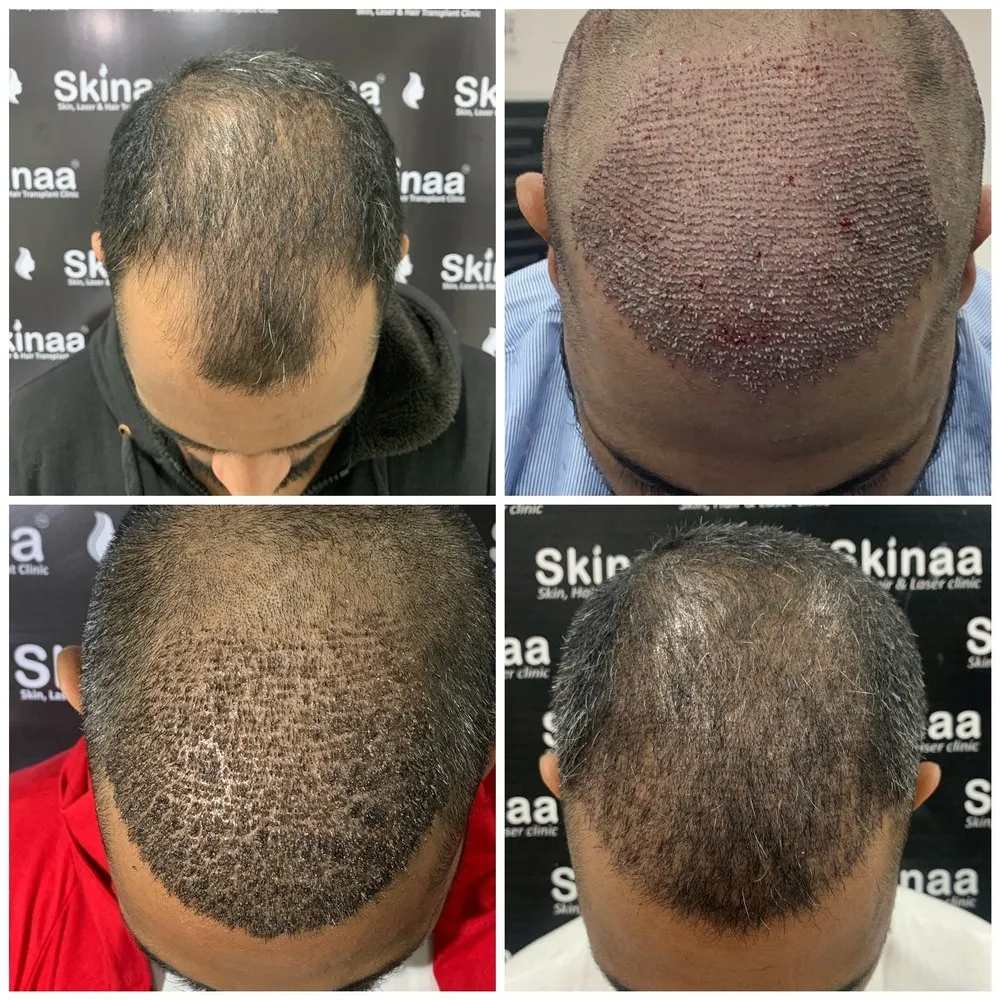What Are the Side Effects of a Hair Implant?

Hair transplants are intended to stimulate hair growth in places of the scalp where it has been stunted or nonexistent. Hair transplant in Lahore can effectively cure many different forms of hair loss, they cannot halt further hair loss. People could need further transplants for long-lasting outcomes.
The most successful and promising way to restore hair is via hair implants. The methods, which are always changing, have cosmic expectations. But to prevent disappointment, consumers should be aware of some negative effects of hair transplants.FUE hair transplantation is a surgical procedure, even though it has become one of the most popular cosmetic procedures in recent years. As a result, while they differ from person to person, adverse effects after hair transplant surgery are fairly common.
Hair Shedding
One would assume that their hair will continue to grow and develop thicker after a hair transplant. However, many individuals will have to cope with autumn first, which is the fact. After transplantation, this procedure is known as shedding and is typical. It occurs due to the root remaining intact, the hair shaft collapsing, and new root development beginning. The newly implanted hairs fall off in two to three weeks, and the new growth shows up three to four months later. It is unusual and will grow back in a few months. The procedure may sometimes, in a small number of instances, produce a shock loss of the existing hair.
Crusting
Crusting is one of the most common negative effects of hair transplants. Crusting can be noticed in the region where hair transplantation was done within the first 48 hours following the procedure.Another indication of healing is crusting. The crusting that develops after hair transplantation shouldn’t be treated. The well-being of the plant and hair follicles depends on not peeling the shells.
The hair follicles may suffer direct injury from shell peeling. When crusting develops after hair transplant surgery, it is advised that you follow your doctor’s instructions without hesitation and use the medications they prescribe.Crusting heals spontaneously in an average of 2 weeks. Use the particular shampoo that your hair transplant surgeon advises
Infections After Hair Transplants
Infections on the scalp are possible adverse effects of hair transplant surgery. Aftercare guidelines assist you in avoiding any circumstances where dirt or dangerous germs could enter the delicate region and result in an ailment known as folliculitis. The facial and scalp edema often indicates this. Most of the time, topical antibiotic therapy may treat it. Patients should be made aware that these potential risk factors for hair transplants might alter the outcome of the procedure.
Scalp Swelling & Eye Bruises
The patient’s scalp (the recipient region) may sometimes expand due to fluid production. It could also result in discomfort and agony. When fluid builds up on the scalp, it may sometimes trickle down into the eye, leading to the development of bruises or even a black eye. The swelling should ideally go away in a few days, but if it continues, the patient should see a doctor. As this will mend in a few days, there is no need to worry.
Itching
In general, at least three patients out of every 10 will feel an itchy scalp but not those who have implanted black hair with blue highlights. So, one of the most frequent adverse effects of hair transplants is itching. While the degree of itching may vary, the best course of action is to get it evaluated before it worsens. If the discomfort doesn’t go away or becomes worse beyond what can be tolerated, one must choose to visit a medical professional. Scabs are a frequent cause of itchy scalp and are readily treated with shampoo regularly. Special moisturizing oils are available to aid with this problem.
Scarring
If you have an FUE, you will have very few micro scars that will go away in a few weeks. Additionally, these speckling signs will vanish as new hair develops. However, if you have had a FUT, you will undoubtedly have a linear scar, but as long as your hair grows out properly and you choose a style carefully, you shouldn’t be concerned.
Shock Loss
The temporary loss of hair strands on the hair follicles transplanted to the region that has undergone hair loss is one of the most frequent adverse effects of hair transplant surgery. This very natural process must follow every transplant procedure. However, people who have lost their hair are taken off guard in this scenario and may feel anxious and disappointed.
Hair loss during hair transplantation is both very common and only ever transitory. Shock loss, which usually lasts two weeks, differs from person to person. It is impossible to forecast shock loss following a hair implant, although it often happens one to three months after the treatment.
How Can I Avoid Hair Implant Side Effects?
The first and most important step to prevent unwanted hair transplant side effects is to choose an actual reputed clinic and educated and experienced hair transplant specialists. The best cosmetic surgeon in Lahore provides a broad range of medications,advice, suggestions, and aftercare items to help you through your metamorphosis into a genuine gentleman.
Conclusion:
People with hair thinning and loss may benefit from hair transplant surgery. Although it may not be a long-term fix for thinning hair, it can often help many individuals regain their confidence and hair fullness.Every medical treatment has several risks. It is advised for individuals to do a thorough study before having a hair transplant to determine which procedure is the most practical for them. Letting things unfold naturally is far safer than putting yourself through an experience if the dangers exceed the benefits.